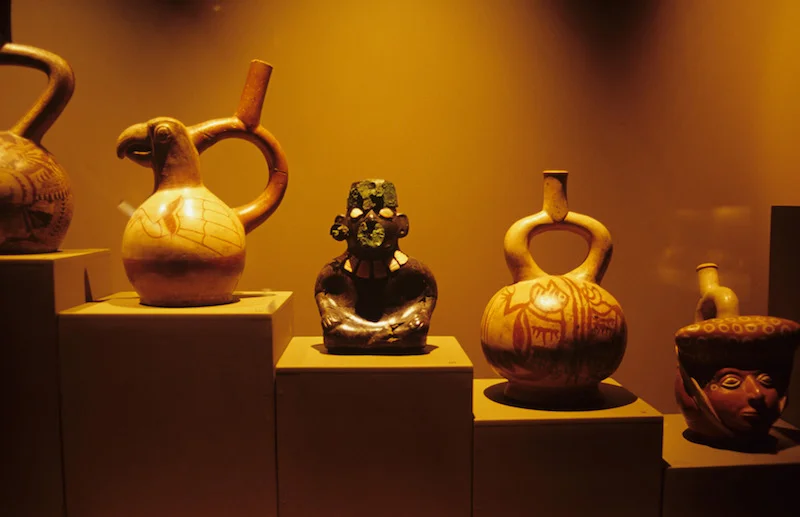Northern Peru’s Coastal CiviliSations
Peru’s coastal region is a long desert strip that stretches from the Department of Tumbes in the north - bordering Ecuador - to Tacna in the south, on the border with Chile. Its total length is 2,500 km (1,553 miles).
The coast covers only about 10% of Peru’s territory, but contains more than 50% of the population, in cities such as Trujillo, Chiclayo, Piura - and of course the capital, Lima.
Example of graphic Moche pottery.
The dry, desert conditions have always made agriculture along the coast a difficult task. As a result, pre-Columbian civilisations were only able to flourish in valleys supported by rivers coming from the Andes.
But these same conditions have helped preserve many of these Northern Peru cultures, that predated the Inca by hundreds or even thousands of years.
The best known of these are the Moche (100 B.C. to A.D. 850), but you can tread in the footsteps of lesser-understood and far older cultures at Sechin (from 1600 B.C) and Caral (from 2900 B.C.).
The Chimu and Sican peoples bridged the gap between the Moche and the Inca, and various other smaller groups left indelible traces over the centuries.
Dancers at Trujillo’s Northern Marinera Festival.
The elegant Colonial town of Trujillo, with its well-preserved architecture and agreeable climate, is the main city along the north coast and a good base for exploration of the many pre-Columbian ruins in the area.
It also boasts a strong, contemporary culture, being the host of the annual Northern Marinera Festival, which celebrates the local, traditional dance, attracting thousands of visitors.
Nearby Huanchaco still maintains its fishing village air, but now receives many overseas visitors, who want to mix some time at the beach with archaeological investigation.
Similarly, the area around Chiclayo is replete with ruins … and yet the beach is just a short drive away.
The region’s museums exhibit the highlights of the archaeological discoveries, with arguably the best being The Royal Tombs Museum in the small city of Lambayeque.
PeruNorth’s itineraries largely focus on the fascinating archaeology to be found around Trujillo and Chiclayo:

